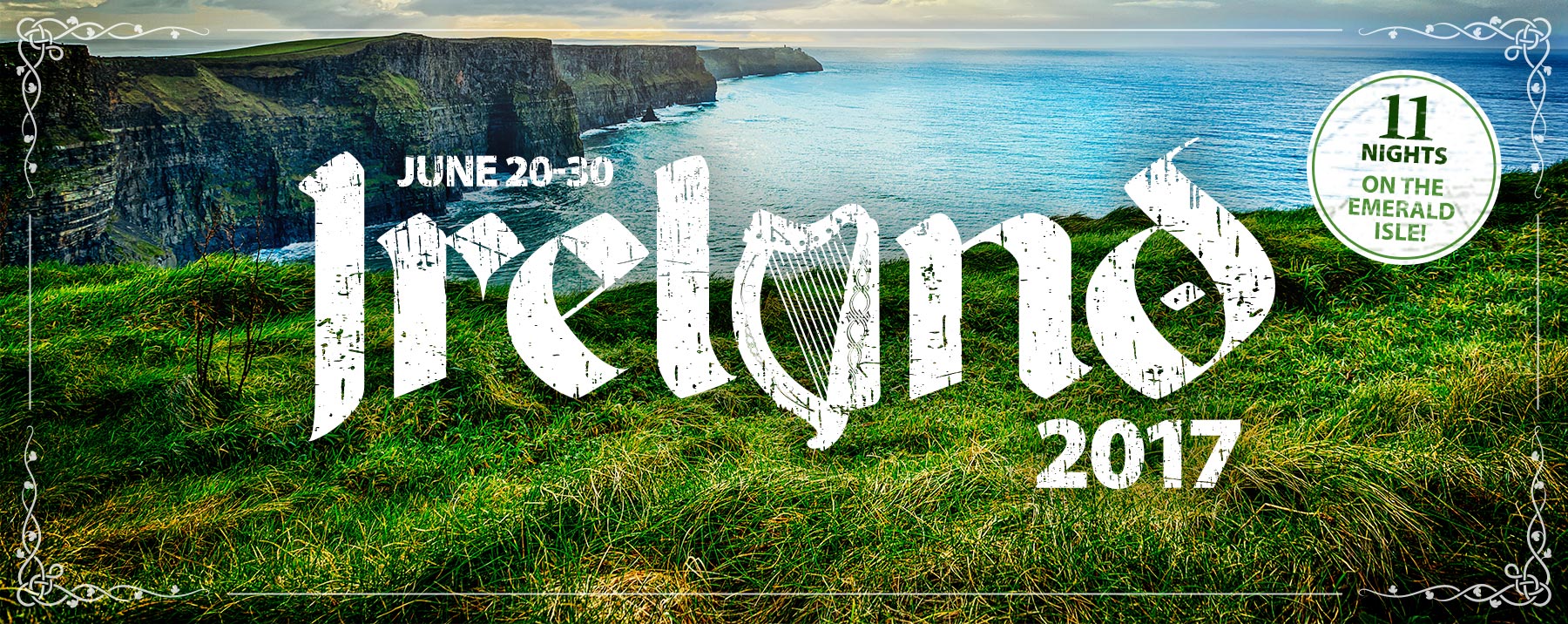
An Irishman once declared, “those in power write the history, while those who suffer write the songs.”
 oin us in the land where minstrels set the heather afire with their rhetoric, barristers led farmers into battle and mothers used battle songs as lullabies. Journey with Landmark Events this June as we immerse ourselves in the history and culture of a nation legendary for its elegiac passions and enduring love of heritage. Ireland, endowed with a staunch framework of familial loyalty, has undergone centuries of oppression and revisionism: only to counter it repeatedly by some of the most remarkable cultural rebirths Europe has ever seen. Their seemingly unflagging optimism in their own futures and destinies has touched every country where their diaspora has banished them, causing George Washington to refer to them as “that ever enduring land.” Ireland’s heroes and villains are as fantastical and pertinent as could be wished for; St. Patrick, Columba, James Ussher, Daniel O’Connell, Thomas Mahr and Michael Collins just to name a few. The history of their struggles is deeply personal and their legacy of immortalizing the past, searing in its dramatic unfolding over the last century.
oin us in the land where minstrels set the heather afire with their rhetoric, barristers led farmers into battle and mothers used battle songs as lullabies. Journey with Landmark Events this June as we immerse ourselves in the history and culture of a nation legendary for its elegiac passions and enduring love of heritage. Ireland, endowed with a staunch framework of familial loyalty, has undergone centuries of oppression and revisionism: only to counter it repeatedly by some of the most remarkable cultural rebirths Europe has ever seen. Their seemingly unflagging optimism in their own futures and destinies has touched every country where their diaspora has banished them, causing George Washington to refer to them as “that ever enduring land.” Ireland’s heroes and villains are as fantastical and pertinent as could be wished for; St. Patrick, Columba, James Ussher, Daniel O’Connell, Thomas Mahr and Michael Collins just to name a few. The history of their struggles is deeply personal and their legacy of immortalizing the past, searing in its dramatic unfolding over the last century.
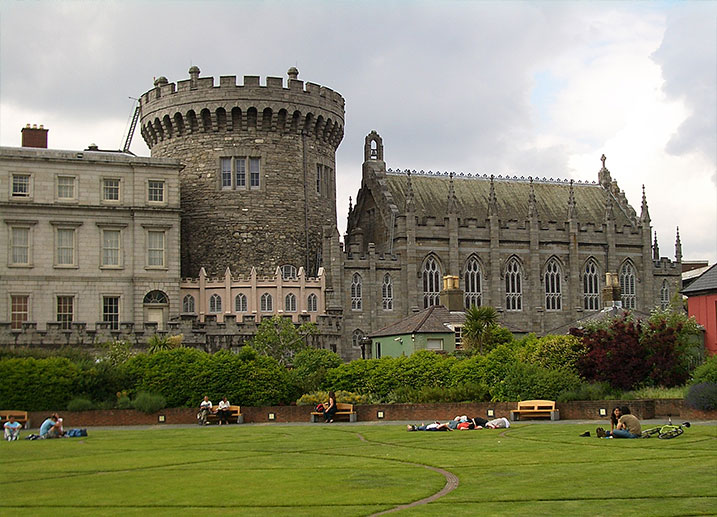
Dublin Castle
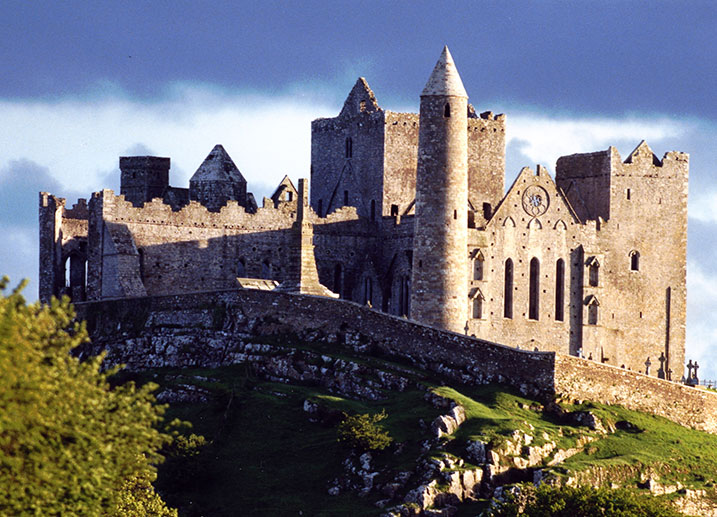
Rock of Cashel
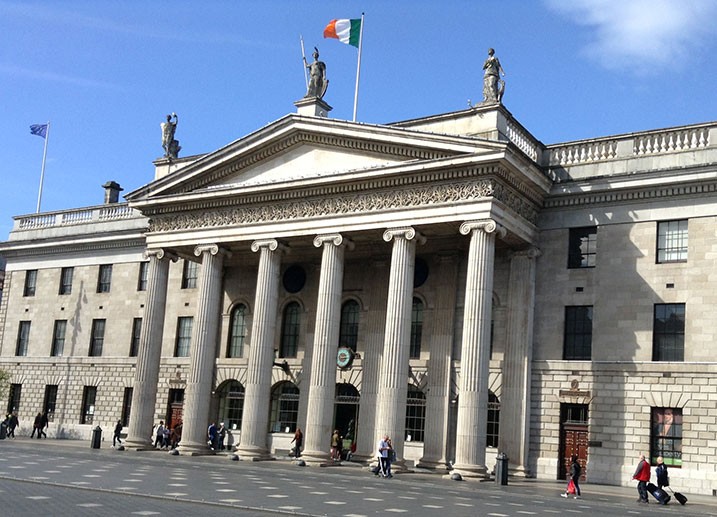
GPO (General Post Office)
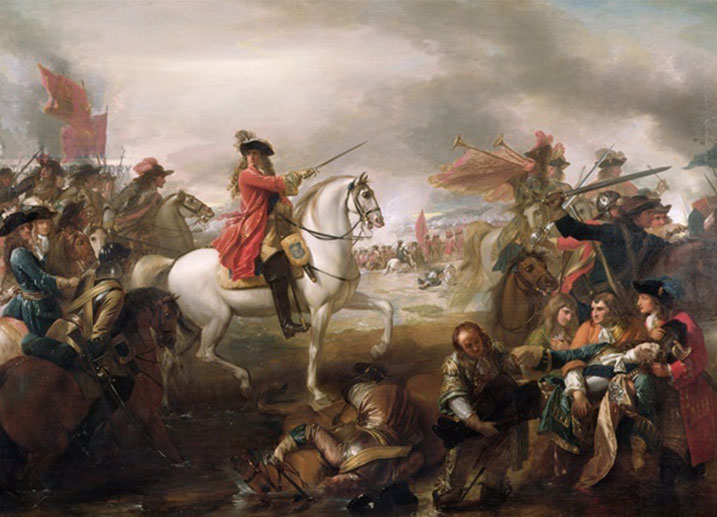
Battle of the Boyne
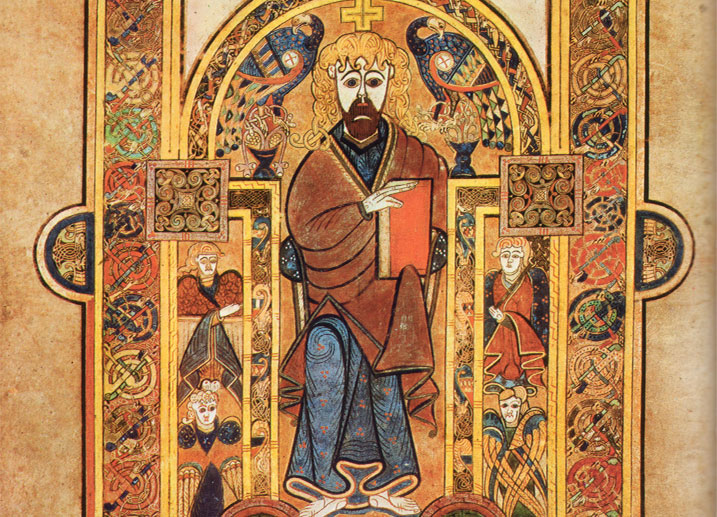
The Book of Kells
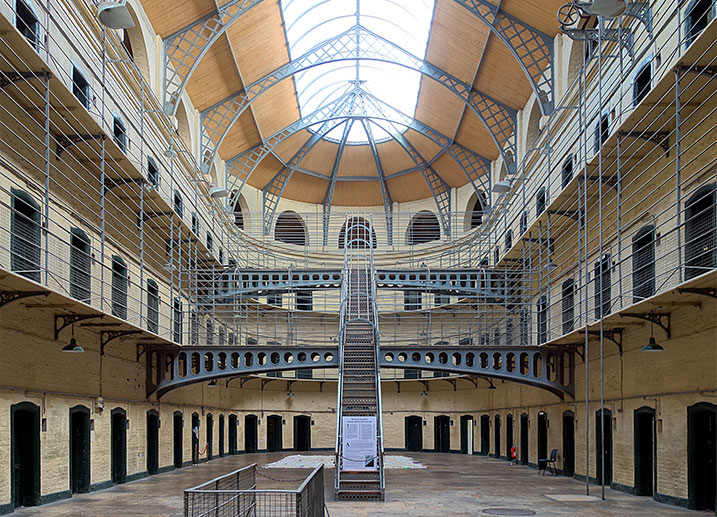
Kilmainham Gaol
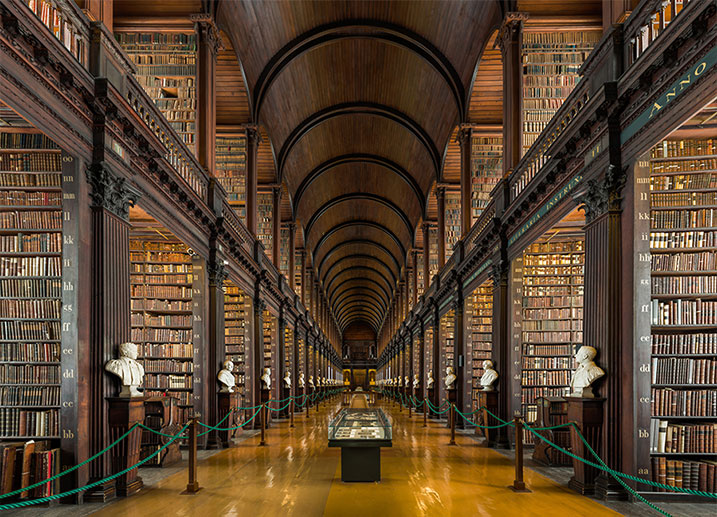
Trinity College
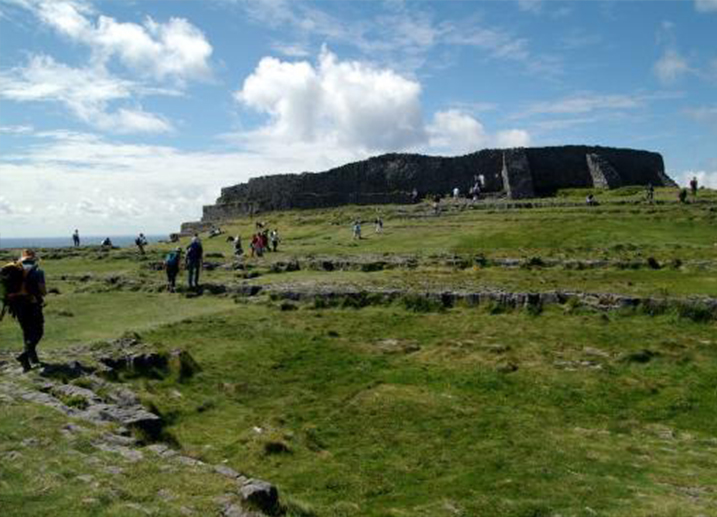
Dun Aonghasa, Iron Age fortress
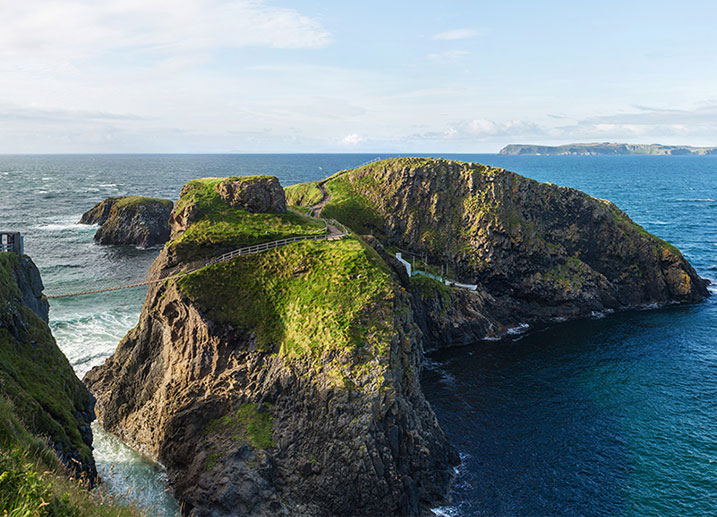
Breathtaking scenery and peaceful solitude
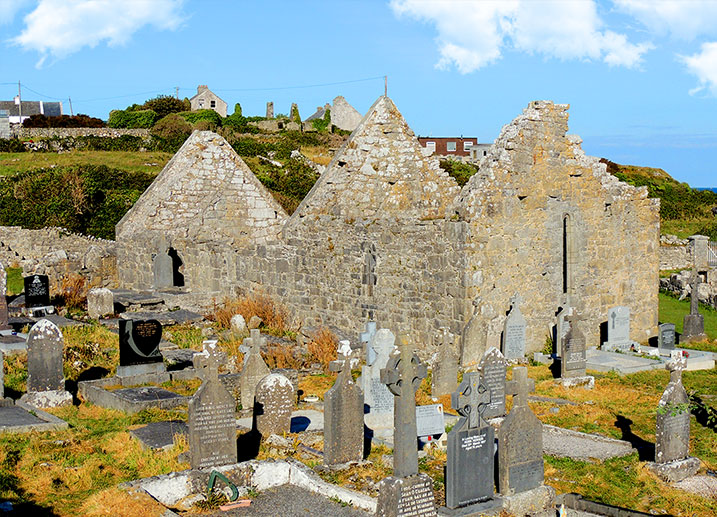
Tempull Breccain
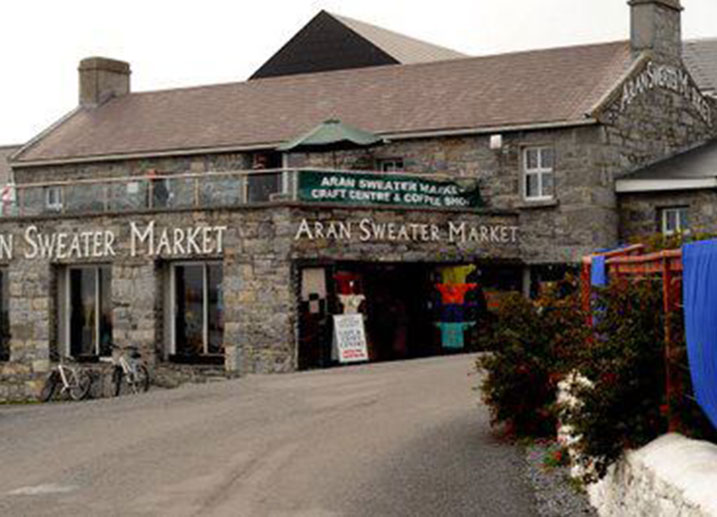
Famous Aran Sweater Market
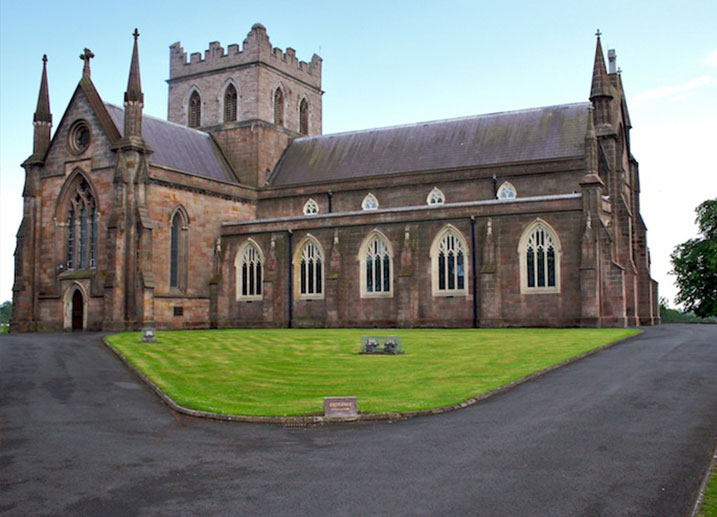
St. Patrick’s Cathedral — Church of Ireland
You are invited to tour the Emerald Isle with a small group of fellow Christians exploring the vibrant scenery and tumultuous history of this unique land. We will be traversing a wide range of history from the Stone Age to the early 20th century. You will hike to forts built a thousand years before Christ’s birth, explore the remarkable cathedrals built in St. Patrick’s day, tour the Titanic’s last port of call and traverse the streets where Irish independence was won just 100 years ago. The Irish are a resilient people that are familiar with suffering, yet they have always kept a sense of joy and optimism amidst very trying circumstances throughout their history. You’ll be encouraged and amazed as we reveal the remarkable ways God has used these fiery-spirited people to change the world.
Included in This Tour
- 11 nights lodging in 3- and 4-star hotels (and an island B&B!)
- 11 Breakfasts / 7 lunches / 6 dinners
- Travel on luxury coach throughout tour
- All entrance and guides fees, ground transportation, donations at churches
- Ground Transfer between Dublin International Airport and O’Callaghan Monte Clare Hotel
- Wireless headsets for ease of hearing
- Distinctly Christian interpretation from Bill Potter and local experts
- Rich fellowship and new friends!
- Ample free time to explore on your own
- Signature Landmark Events service
Ticket Information

“They’ve done all the work for you! Just show up and enjoy each of the amazing venues and soak in the Biblical interpretations and rich fellowship!” —Jessica K.
“Our family has travelled extensively and this was our first faith-based tour. There is something patently different about traveling with a group of believers and learning about the sights from a Christian perspective. It was an extraordinary trip that deepened our faith and bonded our family.” —Kerry N.
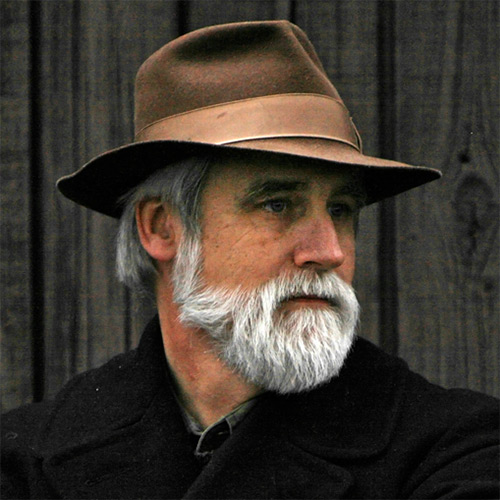
Historian Bill Potter
Historian Bill Potter combines a lifelong study of history with an uncommon ability to captivate audiences of all ages as he traces the providential acts of God throughout the ages. Leading tours of American and European historical sites, he has earned a well-deserved reputation as a gifted communicator, bringing to each event a wealth of experience and knowledge. A seasoned researcher and writer, Mr. Potter possesses a practical knowledge of antiquarian books, documents, and artifacts and has published numerous short books, as well as many articles and book reviews. He and his wife, Leslie, reside in Virginia.
Tour Highlights
 t really is the Emerald Isle, overwhelmed with shades of green, beautiful to behold, fascinating to visit, and imbued with a history of Celtic tribalism and warfare, full of tragedy, struggle and hardship mixed with irresistible humor, good cheer, superstition, and trust in God. We will travel from the “stone age” of Druidic paganism, through the conversion to Christ of most of the island, to the long and bloody attempts to maintain independence while resisting foreign control. We will clamber over ancient castles, abbeys and churches and visit quaint historic towns that connect the past and present in music, dance, and cuisine. Our tour will include sites vital to the story of the RMS Titanic, battlefields, museums, and living history, as well as ample free time to shop and explore your Irish roots, helping personalize the experience even more. “Unforgettable” hardly describes what’s ahead with Landmark Events.
t really is the Emerald Isle, overwhelmed with shades of green, beautiful to behold, fascinating to visit, and imbued with a history of Celtic tribalism and warfare, full of tragedy, struggle and hardship mixed with irresistible humor, good cheer, superstition, and trust in God. We will travel from the “stone age” of Druidic paganism, through the conversion to Christ of most of the island, to the long and bloody attempts to maintain independence while resisting foreign control. We will clamber over ancient castles, abbeys and churches and visit quaint historic towns that connect the past and present in music, dance, and cuisine. Our tour will include sites vital to the story of the RMS Titanic, battlefields, museums, and living history, as well as ample free time to shop and explore your Irish roots, helping personalize the experience even more. “Unforgettable” hardly describes what’s ahead with Landmark Events.

(June 20-22, 25, 30)
Founded as a Viking settlement, Dublin emerged as Ireland’s principal city following the Norman invasion in the 1200. The city expanded rapidly from the 17th century and was briefly the second largest city in the British Empire before the Acts of Union in 1800. Following the partition of Ireland in 1922, Dublin became the capital of the Irish Free State, later renamed Ireland. The Easter Rising of 1916, the Irish War of Independence, and the subsequent Irish Civil War resulted in a significant amount of physical destruction in central Dublin, as we will see at the Grand Post Office.
We will make our headquarters in the heart of Dublin, at the O’Callaghan Mont Clare Hotel, situated beside Merrion Square, one of Dublin’s largest and grandest Georgian squares. Three sides are lined with Georgian redbrick townhouses, residences of past and present notables. Poet and novelist Oscar Wilde, lived at No. 1, poet W. B. Yeats at No. 82, and Daniel O’Connell at No. 58. Just one block from the National Gallery and National Museum of Ireland, and five minutes from Trinity University and the Book of Kells, you will have Dublin at your doorstep, just waiting to be explored!
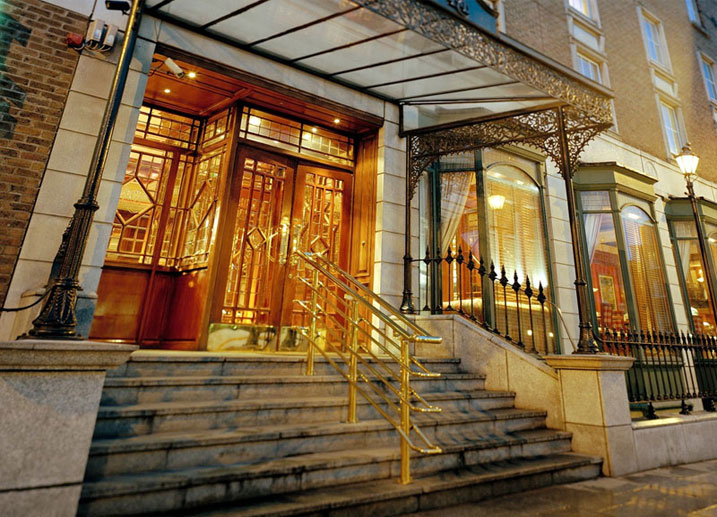
Opening Reception
We will begin our tour with a casual welcome reception at our headquarter hotel in Dublin, the O’Callaghan Mont Clare. We will make introductions and equip you with guidebooks, schedules and audio sets while enjoying light hors d’oeuvres and beverages. Bill Potter will give a brief overview of the tour and then you are free to fellowship before turning in for the night.

Dublin Castle
Since its foundation in 1204, Dublin Castle has been at the heart of the history of the city. Today, spanning an area of over 44,000 square meters (11 acres), the site contains 2 museums, 2 cafés, an international conference centers, 2 gardens, government buildings, and the State Apartments which are the most important state rooms in the country.

Kilmainham Gaol
Kilmainham Gaol is one of the most important Irish monuments of the modern period, in relation to the narrative of the struggle for Irish independence. In the period of time extending from its opening in 1796 until its decommissioning in 1924 it has been — barring the notable exceptions of Daniel O’Connell and Michael Collins — a site of incarceration of every significant Irish nationalist leader of both the constitutional and physical force traditions. The majority of the Irish leaders in the rebellions of 1798, 1803, 1848, 1867 and 1916 were imprisoned there.

GPO (General Post Office)
During the Easter Rising of 1916, the GPO served as the headquarters of the uprising’s leaders. The building was destroyed by fire in the course of the rebellion and not repaired until the Irish Free State government took up the task some years later. An original copy of the Proclamation of the Irish Republic was on display in the Post Museum at the GPO, where an exhibition Letters, Lives and Liberty highlighted the history of the Post Office and the GPO.

The Book of Kells
The Book of Kells is Ireland’s greatest cultural treasure and the world’s most famous medieval manuscript. The 9th century book is a richly decorated copy of the four Gospels of the life of Jesus Christ.
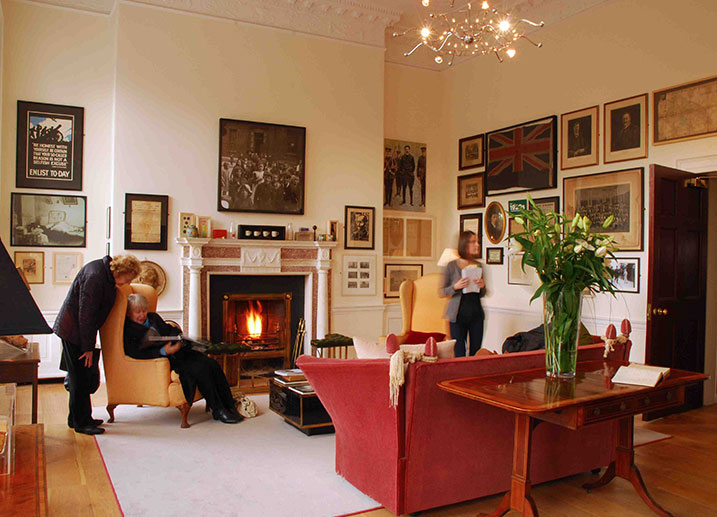
The Little Museum of Dublin
The Little Museum of Dublin tells the remarkable story of the Irish capital in a most unique way, by compiling artifacts by public donation. Explore history, politics, arts and culture, sports and just about anything else you can think of that makes Dublin so very special.
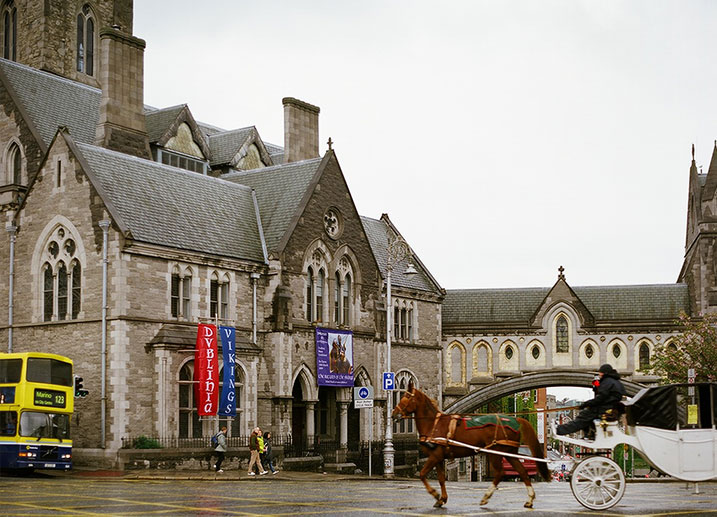
Dublinia
A fascinating museum of ancient Dublin containing a multitude of interesting displays, lots of videos, pictures, and model representations of life in Dublin during the Viking and Medieval times.

Rock of Cashel
The Rock of Cashel was the traditional seat of the kings of Munster for several hundred years prior to the Norman invasion. In 1101, the King of Munster, Muirchertach Ua Briain, donated his fortress on the Rock to the Church. The picturesque complex has a character of its own and is one of the most remarkable collections of Celtic art and medieval architecture to be found anywhere in Europe.

(June 23)
Armagh City is perhaps best known for its rich Christian heritage. The settlement has been the spiritual capital of Ireland since Saint Patrick founded his first church on the hilltop site of the present….

St. Patrick’s Cathedral — Church of Ireland
Around 445 AD, and today, the heads of both the Catholic and Anglican Churches on the island are seated here. Saint Patrick founded his main church here on the Hill of Armagh in 445 AD. There has been a Christian church on the site ever since.
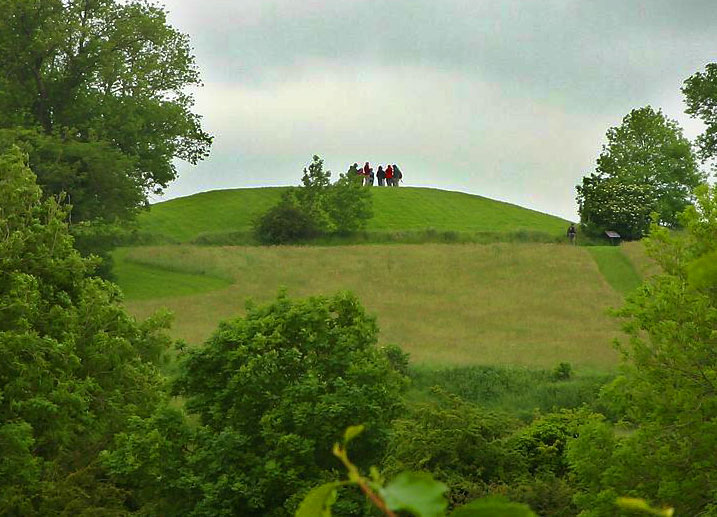
Navan Fort
A short distance to the west of the city, Navan Fort is thought to have been an ancient pagan ceremonial site. It comprises a large circular earthwork surrounding the summit of a drumlin hill and is the site of some fascinating archaeological discoveries.
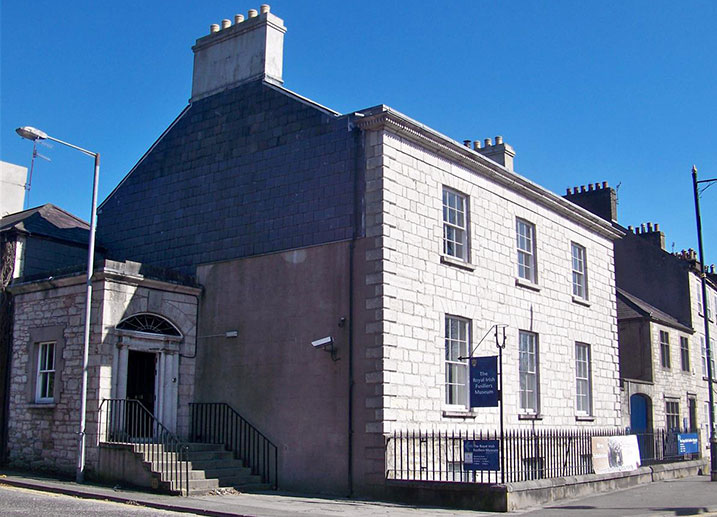
The Royal Irish Fusiliers Museum
The museum collection covers the history of five regiments, all of which were raised in 1793. The Royal Irish Fusiliers served for almost 200 years and is known as the “Faughs” from their Battle Cry “Faugh-a-Ballagh”.

(June 24)

Battle of the Boyne
In 1690, the newly ousted-from-power James II of England fled to Ireland to fight for his throne. The new king, William of Orange, obliged him by invading Ireland with 36,000 troops and fighting it out in a number of battles. The most important occurred along the Boyne River, where William led his men to victory, and James fled to France, giving up the throne of England for good.
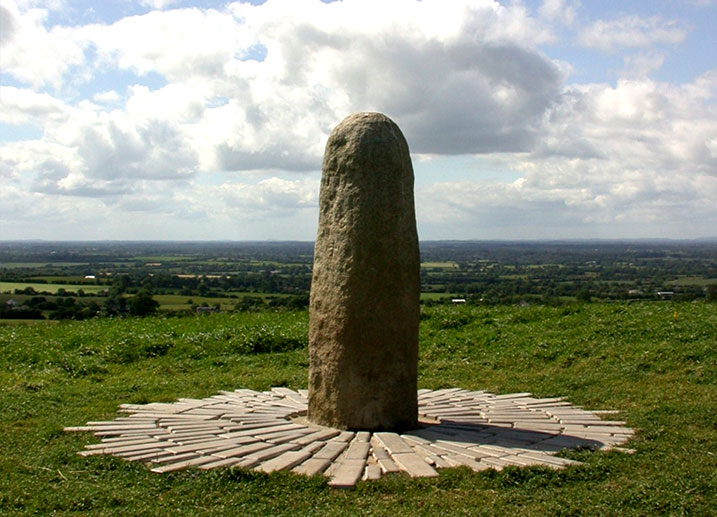
Hill of Tara
Hill of Tara is a site of great importance throughout Irish history. Pagan ceremonies were held here over a thousand years before Christ while sixth-century Celtic high-kings were seated here and ruled from this summit. In 1843, the Irish Member of Parliament Daniel O’Connell hosted a peaceful political demonstration on Hill of Tara in favour of repeal of the Act of Union which drew over a million people.
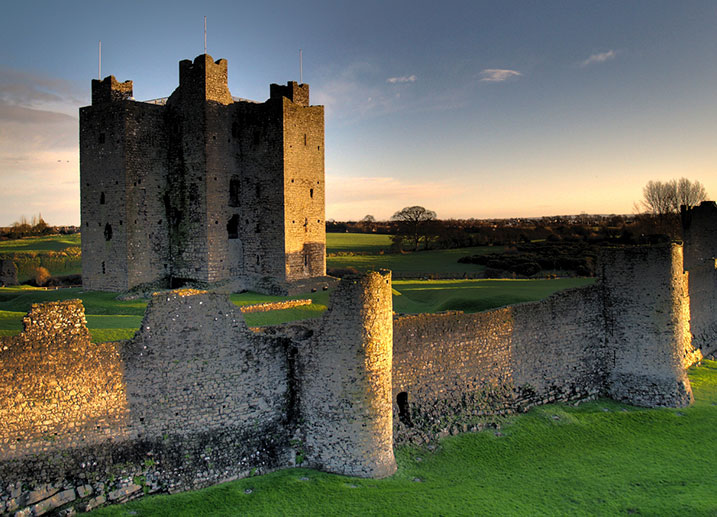
Trim Castle
The largest Norman castle in Ireland, Trim Castle was used as a center of Norman administration for the Lordship of Meath, one of the new administrative areas of Ireland created by King Henry II of England in 1172. During the late Middle Ages, Trim Castle marked the outer northern boundary of The Pale, that part of Ireland that fell genuinely under the authority of English law.

(June 26-27)
Inis Mór is the largest of the Aran Islands in Galway Bay. At 840 residents, it is the most populous of the Aran Islands and it is the largest island off the Irish coast with no bridge or causeway to the mainland. The island is famous for its strong Irish culture, loyalty to the Irish language, and a wealth of pre-Christian and Christian ancient sites including Dún Aengus, described as “the most magnificent barbaric monument in Europe”.
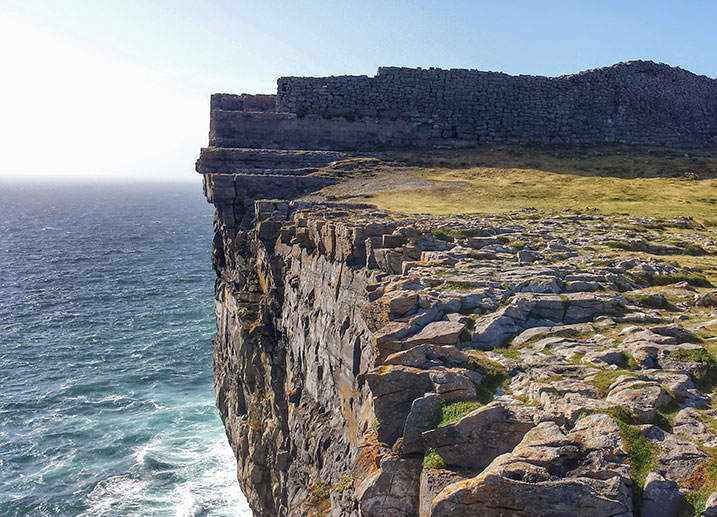
Dún Aonghasa
A 14-acre site, the fort consists of three terraced walls surrounding an inner enclosure containing a platform on the edge of a three-hundred-foot-high cliff. The views from it are breathtakingly spectacular. Excavations carried out in the 1990s indicated that people had been living at the hill top from c. 1500 B.C. with the first walls and dwelling houses being erected c. 1100 B.C.!
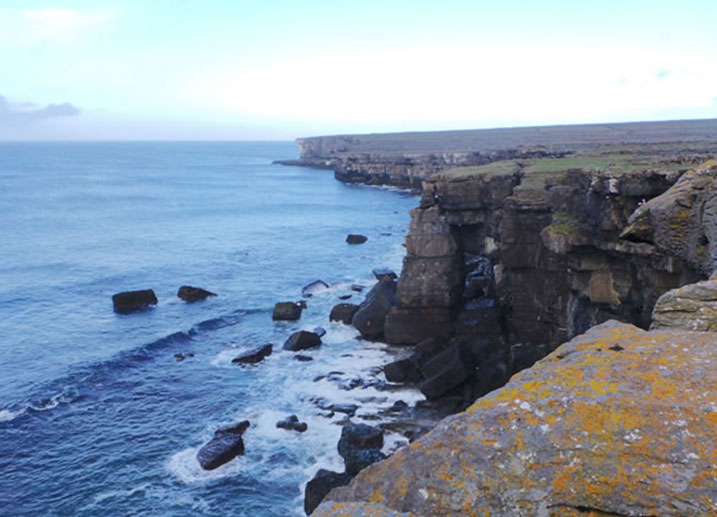
Dún Dúchathair (The Black Fort)
This fort is situated on the cliffs at Cill Éinne, (Killeany). The fort consists of a terraced wall surrounding the remains of some early dwelling houses known as Clocháns (stone houses). The fort gets its name from the dark colored limestone which is characteristic of this particular area on the island.
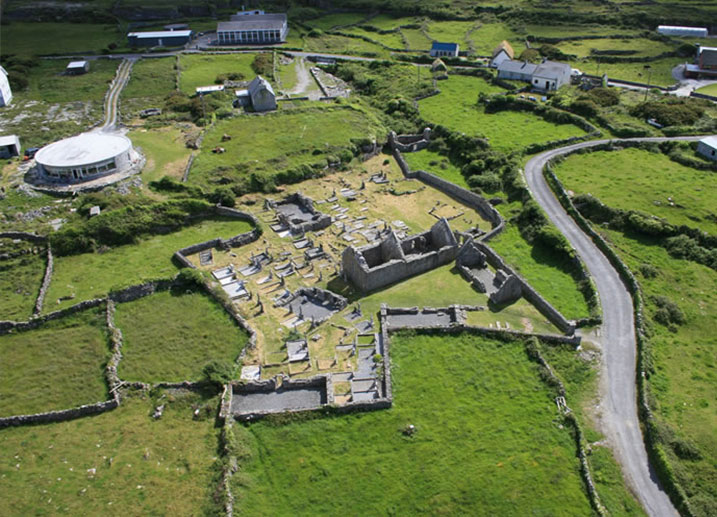
Na Seacht d’ Teampaill (The Seven Churches)
Situated in the west of Inis Mór at the village of Eoghanacht, the seven churches or Dísert Bhreacáin as it is also known, was for centuries one of the biggest monastic foundations and centres of pilgrimage along the west coast of Ireland. Although termed “the seven churches” there are in fact only two churches with a number of domestic buildings.

Tempull Breccain (St. Brecan’s Church)
A large multi-period church c. 8th-13th century. It contains fine massive masonry with an impressive arch, nave and chancel. The remains of a number of penitential beds and fragments of decorated crosses are also to be found on site most notably Leaba Bhreacáin and Leaba an Spioraid Naoimh. There are also a number of interesting cross-inscribed stones and graves in the Southeast corner of the site.
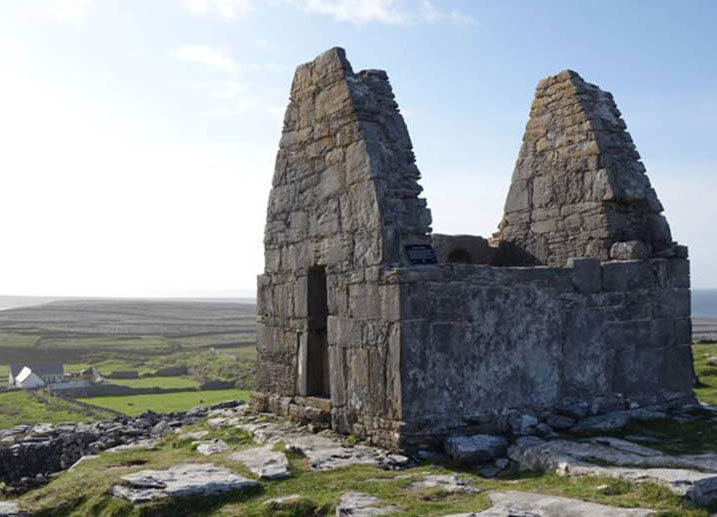
Teampall Bhean’in (St. Benan’s Church)
This is reputedly the smallest church in Ireland. It stands atop a hill overlooking Cill Éinne Bay and is a landmark on the island for fishermen at sea. In contrast with churches elsewhere in Ireland, it has a North-South orientation. It dates from about the 7th century.

Aran Sweater Market
From its origins, the Aran sweater has been intimately linked to clans and their identities. The many combinations of stitches seen on the garment are not incidental, far from it. They can impart vast amounts of information to those who know how to interpret them. Aran sweaters were, and remain, a reflection of the lives of the knitters and their families. Here’s a neat video on Aran Sweater history.
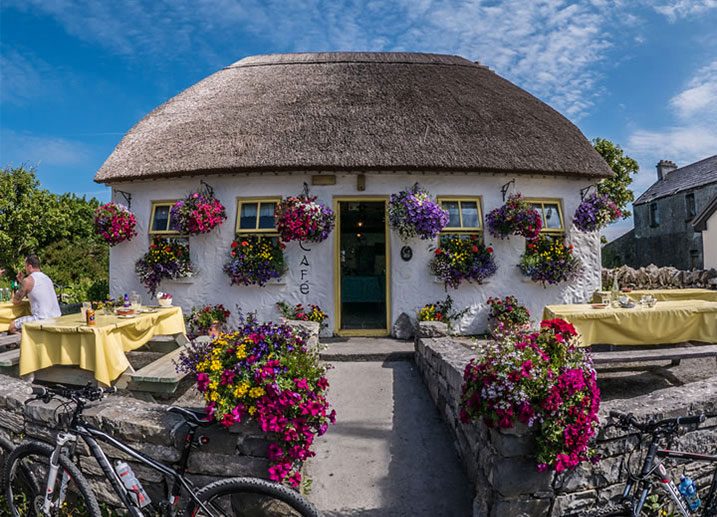
Kilmurvey Craft Village
The Kilmurvey Craft Village is a favorite spot to visit for most people. Consisting of a handful of celtic inspired crafts people it has its atmosphere.
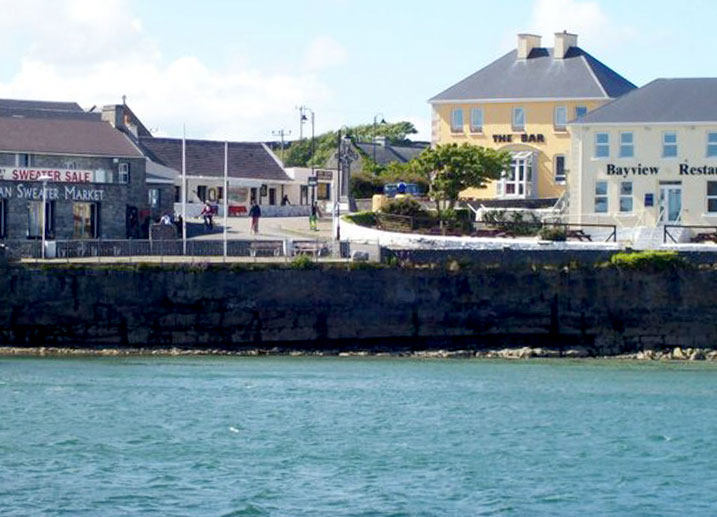
Kilronan Village
This is the main village of Inis Mór and is one of them most picturesque spots in Ireland. Once solely a fishing port for the Aran fisherman, today it is the main port for the ferry companies and main area for festivals. With its adjoining white sandy beach, it has a wide selection of first-class restaurants serving seafood, and traditional Irish Bars and Buskers, and is a splendid spot to base yourself before exploring the island.

(June 28-29)
Cobh, or Queenstown as it was once called, was the port where almost 3 million people from every corner of Ireland emigrated and scattered throughout the globe, including Annie Moore, the first immigrant ever to be processed in Ellis Island. Today Cobh is a charming seaside town filled with shops, cafes and historic treasures.
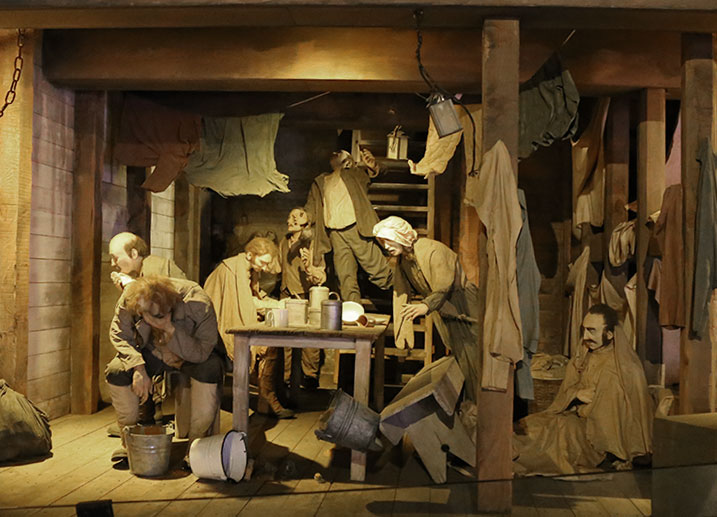
Cobh Heritage Centre
Over three million Irish people emigrated from this port. Tales of the early emigrants to Virginia, the Carolinas and Canada, the forgotten Irish who endured forced labour in the West Indies during and after Cromwellian times, to the sinking of the Titanic and the Lusitania, are inventively displayed in a variety of modern, tasteful and artistic ways. Learn about Irish Emigration story, trace your ancestors, hear about the ill-fated Titanic and the Lusitania, and immerse yourself in Irish naval and military history at Cobh Heritage Centre.
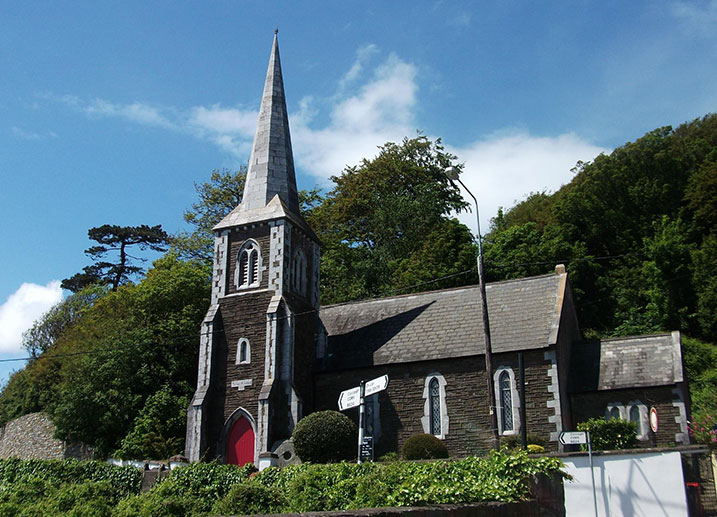
Cobh Museum
Cobh Museum is situated overlooking Cork Harbour. The exhibitions reflect the cultural, social and maritime history of Cobh and the Great Island. Formerly known as Queenstown, Cobh has a long maritime history and is known throughout the world for its association with emigration and was the last port of call for the RMS Titanic. The Museum holds the last written record for the RMS Titanic in the Pilot’s Log book among its many fascinating artifacts.
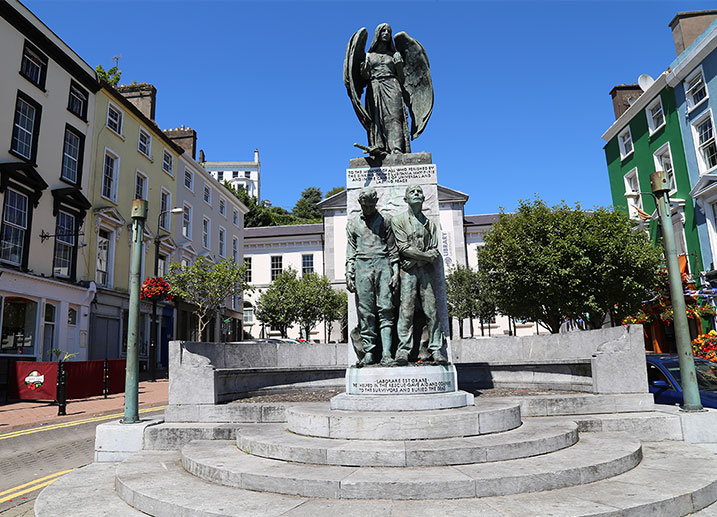
Lusitania Memorial
In 1915, Cunard steamship RMS Lusitania was torpedoed by a German submarine off the Old Head of Kinsale about 20 miles from Queenstown. The people of the town rose to the huge challenge of rescue, comforting the shocked and injured survivors, and identifying, repatriating and burying the dead.
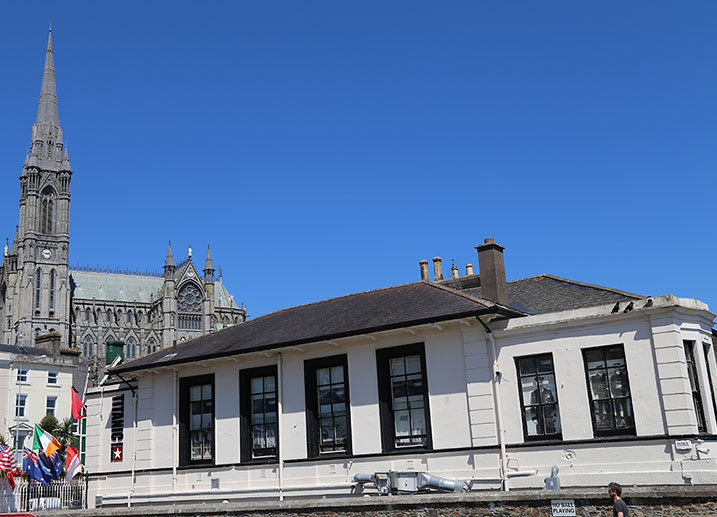
Titanic Experience
Titanic Experience Cobh is located in Casement Square in the heart of Cobh Town. It is housed in the original White Star Line Ticket Office, a building steeped in history dating back to the early 19th century and the departure point for many thousands of White Star Line passengers. We will take an interactive tour that tells the story of the 123 passengers who came to the White Star Line Ticket Office on Thursday April 11, 1912 as well as browse exhibits full of original artifacts from Titanic.
Accommodations
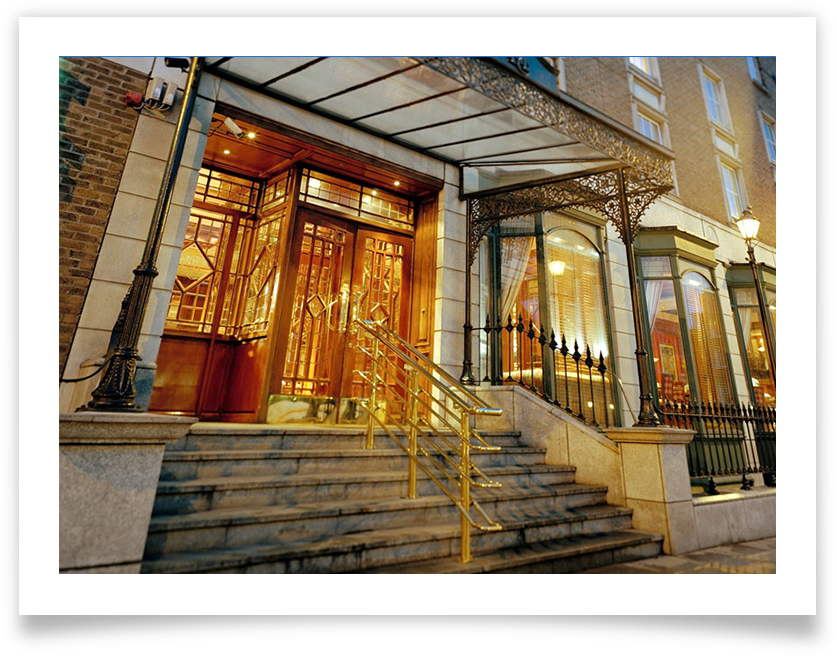

O’Callaghan Mont Clare Hotel
(1-4 Merrion Street Lower, Dublin 2, Ireland)
O’Callaghan Mont Clare Hotel is ideally located in Dublin city centre, situated beside Merrion Square, one of Dublin’s largest and grandest Georgian squares. One block from the National Gallery and National Museum of Ireland, 5 minutes from Trinity University.
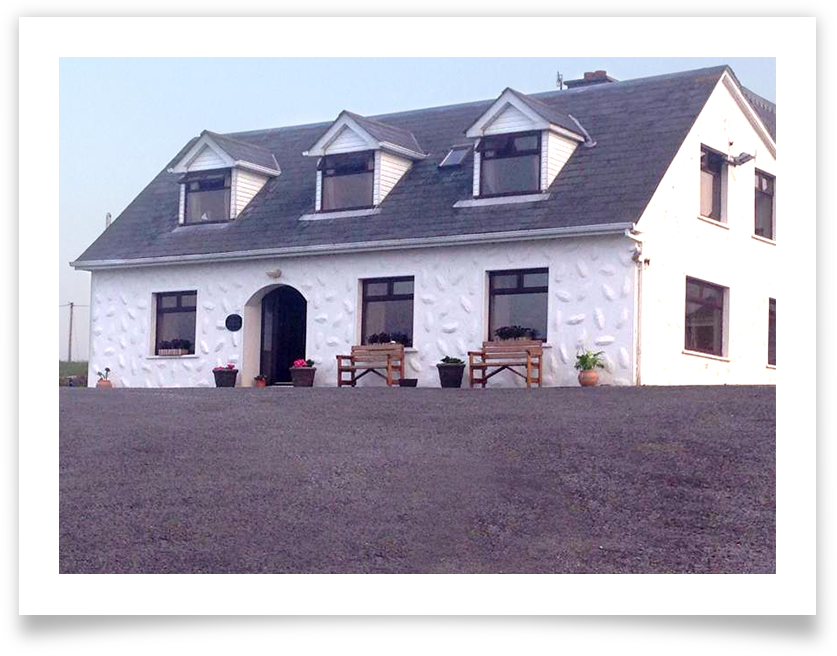

Árd Einne House
(Inis Mór, Aran Islands)
Árd Einne is a 3-star family-run Bed & Breakfast in operation for over 30 years. Primarily a family business, Árd Einne shares their local knowledge about the most fascinating and breathtaking parts of the island. Árd Einne accommodations include six comfy cottage-style bedrooms, beautifully appointed with a spectacular sea view from each window. With the house’s peaceful surroundings, you can be assured of a great night’s rest and you will leave with a new lease on life. All rooms are en suite with tea/coffee making facilities, hair dryers and free wi-fi access.
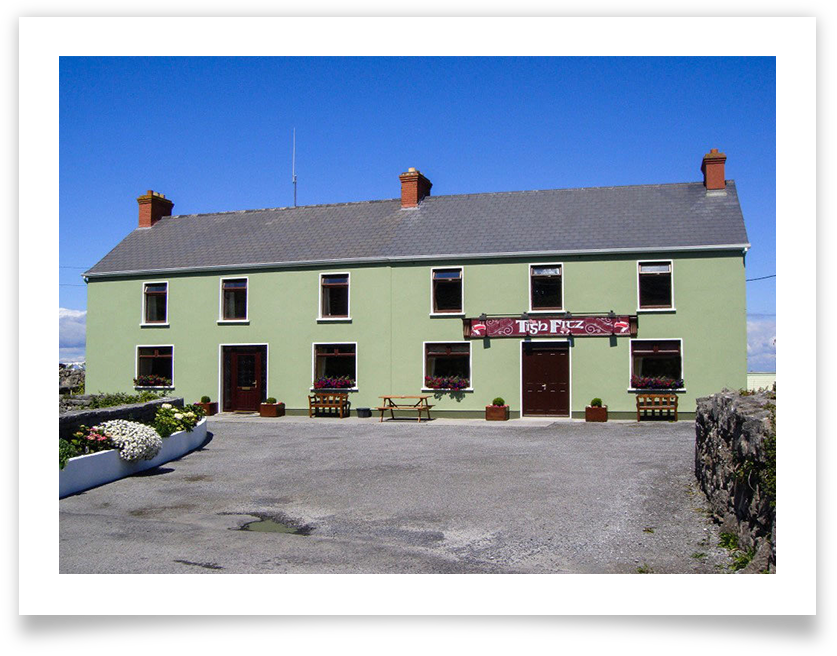

Tigh Fitz
(Inis Mór, Aran Islands)
Tigh Fitz offers luxurious accommodations in this beautiful area of the Aran Islands. Unique in its location, spaciousness and proximity to two beaches and areas of archeological and historical remains. In this area are the famed tall cliffs of Aran and the magnificent ancient forts. Tigh Fitz is 1.6km from the island capital Kilronan and close to the Aer Arann airstrip. At Tigh Fitz you will find all the comforts of home. All rooms are en suite, have direct dial telephone, television, and tea and coffee facilities. You will be treated to spectacular views from all bedrooms.
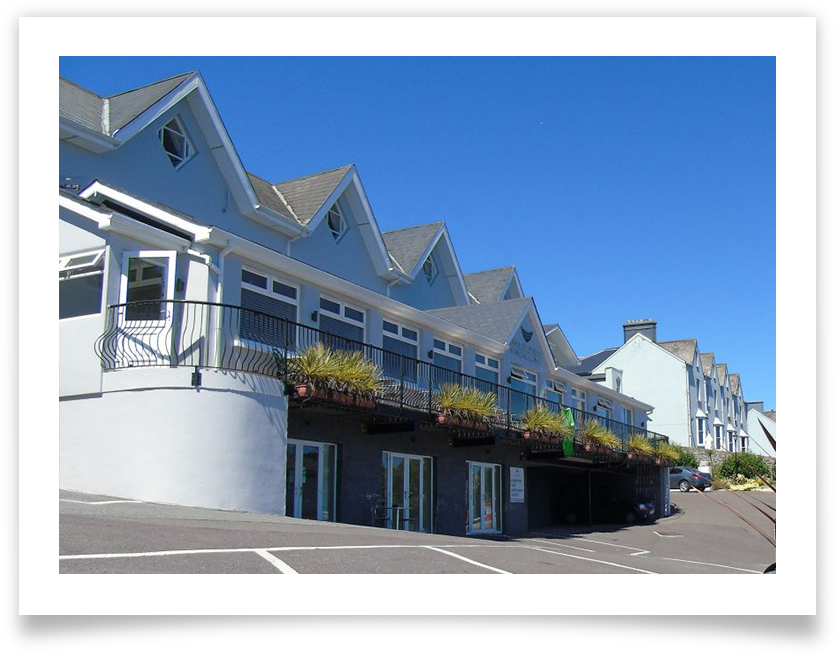

Bella Vista Hotel
(Cobh, County Cork)
All Bella Visa Hotel suites include a fully equipped kitchen with cooking and cleaning facilities and a dining / living room area. Suite amenities also include 32” LCD plasma screen TVs, DVD players, free wi-fi, hairdryer, central heating and complimentary toiletries. A number of the suites have beautiful sea views or private balconies. Full housekeeping services are also provided on every third day, and fresh towels and trash removal everyday.
Image Credits: Dublin Castle; Rock of Cashel; GPO (General Post Office); Battle of the Boyne; The Book of Kells; Kilmainham Gaol; Trinity College; Dun Aonghasa, Iron Age Fortress; Breathtaking scenery and peaceful solitude; Tempull Breccain; Famous Aran Sweater Market; St. Patrick’s Cathedral — Church of Ireland; O’Callaghan Mont Clare; The Little Museum of Dublin; Dublinia; Navan Fort; The Royal Irish Fusiliers Museum; Hill of Tara; Trim Castle; Dún Aonghasa; Dún Dúchathair (The Black Fort); Na Seacht d’ Teampaill (The Seven Churches); Teampall Bhean’in (St. Benan’s Church); Kilmurvey Craft Village; Kilronan Village; Cobh Museum; Árd Einne House; Tigh Fitz; Bella Vista Hotel
Upcoming Events
Pirates, Presidents, Conquistadors and More 2026
February 12-14, 2026




